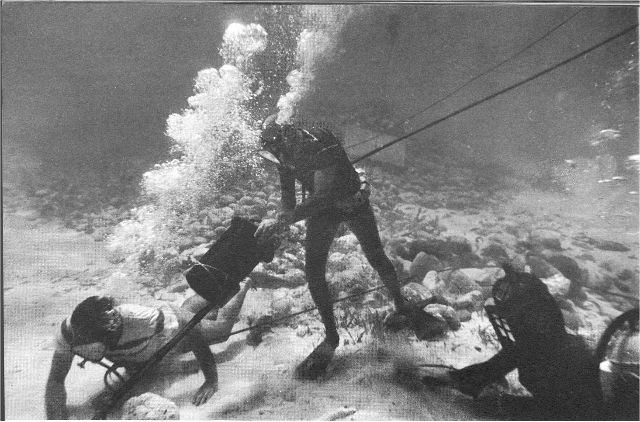Art McKee: Father of Modern Treasure Diving
By Laura Myers
Arthur “Art” McKee was among the first to recognize the vast wealth of treasure and history to be discovered in the turquoise waters surrounding the Florida Keys.
Though he died in 1980 at age 69, his legacy lives on today. His colorful, adventurous life is commemorated at Islamorada’s History of Diving Museum in its core Treasure Room exhibit.
He also is to be featured in a new exhibit, “Dive into Art,” scheduled to run from Jan. 16 to April 17, 2019. In collaboration with the Art Guild of the Purple Isles, the exhibit about the history of underwater art is to include a prized 1954 painting of McKee titled “Treasure Diver” by George Wilhelms.
McKee, a dashing treasure diver and salvager of historic shipwrecks throughout the Keys and the Caribbean, pioneered the worldwide trend of sport diving.
He opened McKee’s Museum of Sunken Treasure in 1952 on Plantation Key as the world’s first museum dedicated to items recovered from shipwrecks. It remained open until 1971.
McKee’s museum featured an array of salvaged treasure including jewelry, coins, cannons, piles of ballast stones and wooden planks. He often took museum visitors on excursions on his glass-bottom boat, the Treasure Princess.
“He allowed them to dive down in an open-bottom helmet to experience the shipwrecks firsthand,” said Josh Thacker, the History of Diving Museum’s collections and exhibit manager.
McKee also provided a “certificate of qualification as treasure diver” to guests who dived with him. Daughter Karen McKee and her siblings colored the certificates on the family’s kitchen table.
“My father was committed to sharing the incredible history of his discoveries with Florida Keys visitors,” said Karen McKee, who lives in Grand Cayman.
“He participated in the development of tourism through his museum and promoted the magnificent undersea world of the Florida Keys, encouraging scuba diving and the academic pursuit of marine archaeology through his preservation of historic artifacts,” she added.
McKee once brought up three 70-pound bars of silver in a single day near Gorda Cay, Bahamas. He became known as Art “Silver Bar” McKee.
McKee used the first underwater dive detector, a waterproofed World War II mine detector. He also introduced underwater movie photography to the Florida Keys.
In addition, he obtained the state of Florida’s first underwater salvage lease to work on several 1733 Spanish galleon wrecks in the Upper Keys.
Born in New Jersey in 1910, McKee discovered his love of diving as a teenager, when he was hired as a tender for a hardhat diver — a traditional dive outfit with a copper helmet supplied via hose with air from the surface — who was surveying hurricane damage in McKee’s hometown of Bridgetown.
After he sustained a serious knee injury as a high school football player, doctors advised him to move to a warmer climate.
McKee headed for the South Florida city of Homestead and became a pool lifeguard, recreation director and chief diver on a U.S. Navy underwater pipeline that ran fresh water from Homestead to Key West.
In 1938 McKee dived the wreck of HMS Winchester, which sank in 1695. He investigated a ballast mound with some cannon near Carysfort Reef, just off Key Largo, but found no treasure.
In summer 1955, McKee traveled to Georgetown, Grand Cayman, to shoot a television spot. He met and married Gay Bodden, an underwater actress.
According to Karen McKee, the family appreciates the History of Diving Museum’s continued support in their endeavor to preserve diving history worldwide — much as her late father did during his storied lifetime.
The History of Diving Museum is located at 82990 Overseas Highway, mile marker 83, in Islamorada. For more information, visit DivingMuseum.org or call 305-664-9737.
Social: Facebook • Twitter • Instagram • Youtube • Keys Voices blog



